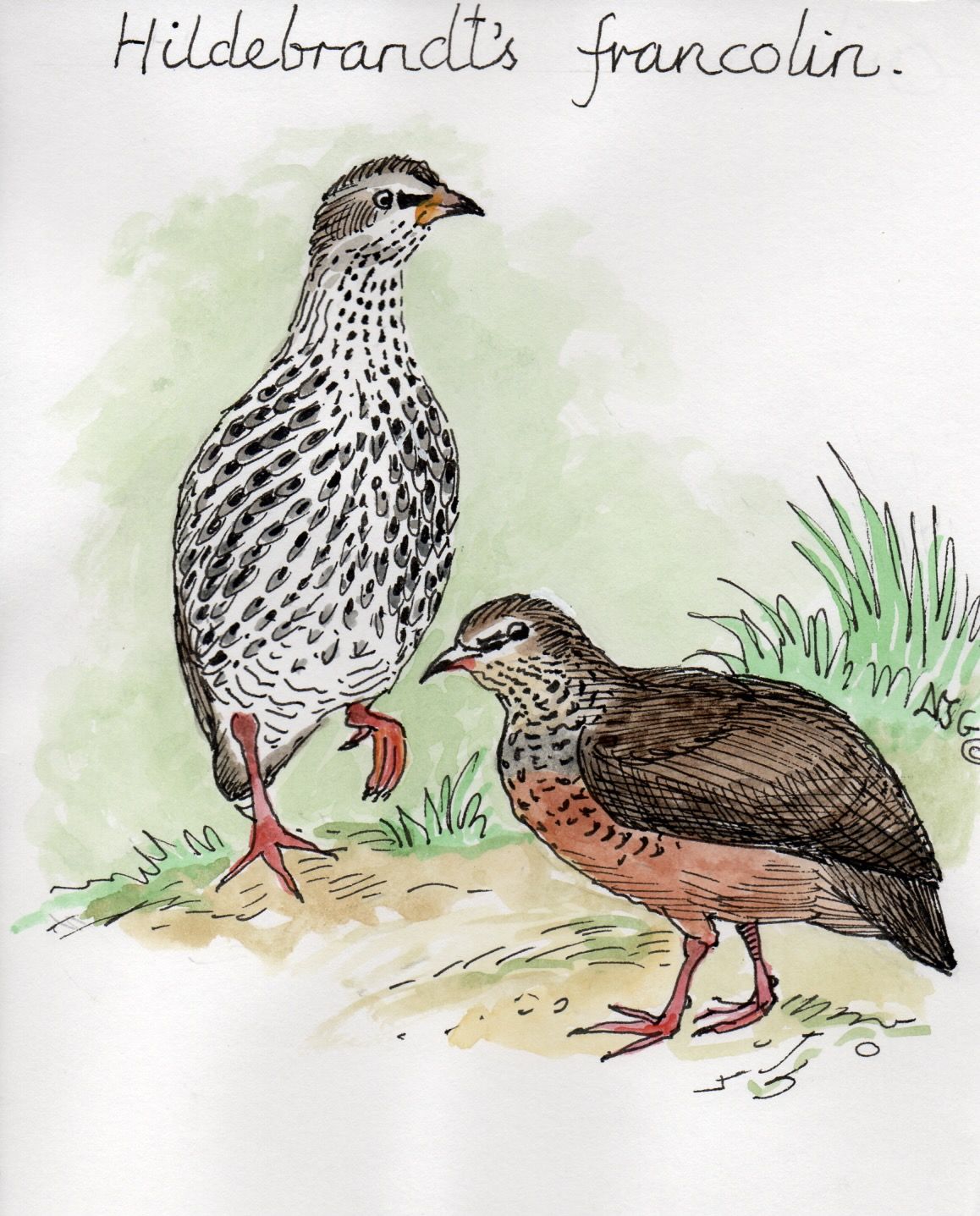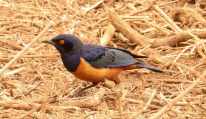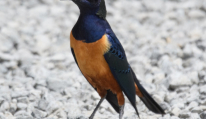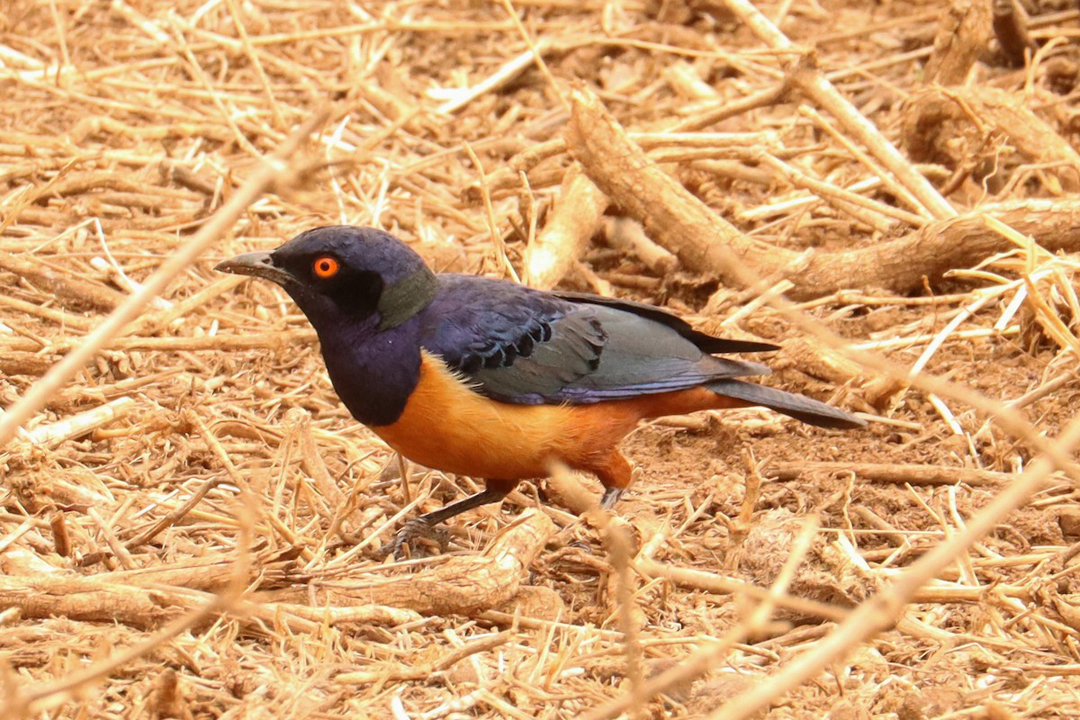Social Structure
Hildebrandt’s starlings are often seen in pairs or small flocks, and sometimes join superb starlings while feeding.
Communication
Calls include a pattern of low, short notes that can end in tentative rising notes.
Behavior
A ground forager, this bird sometimes feeds with other starlings, including greater blue-eared starlings, superb starlings, and wattled starlings.
Conservation
Least concern
Diet
Hildebrandt’s starlings consume mainly insects, such as beetles, grasshoppers, and termites, including insects that have been disturbed by mammals.
Breeding
Hildebrandt’s starlings build a nest of hair or plant fibers in old woodpecker holes in trees or holes in fence posts or other wood structures. Both parents feed the chicks after the eggs hatch.
Friends & Foes
Great spotted cuckoos parasitize nests.
Population in Kenya
They are found in only the central and south-central regions of Kenya.
Range & Habitat
These birds are found only in Kenya and Tanzania.
Hildebrandt’s starlings frequent bush and open woodland, and also visit cattle enclosures, possibly to forage for insects.





